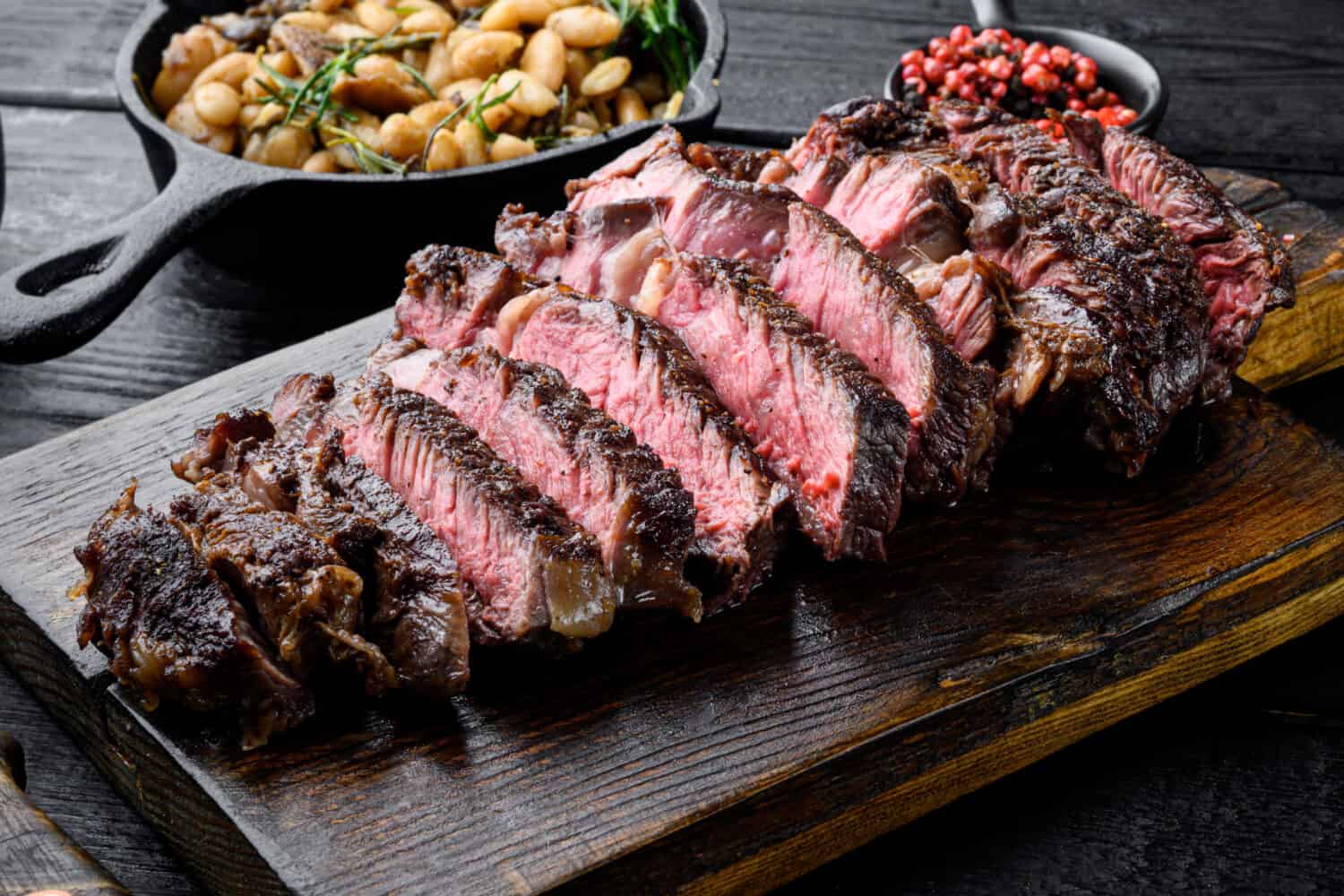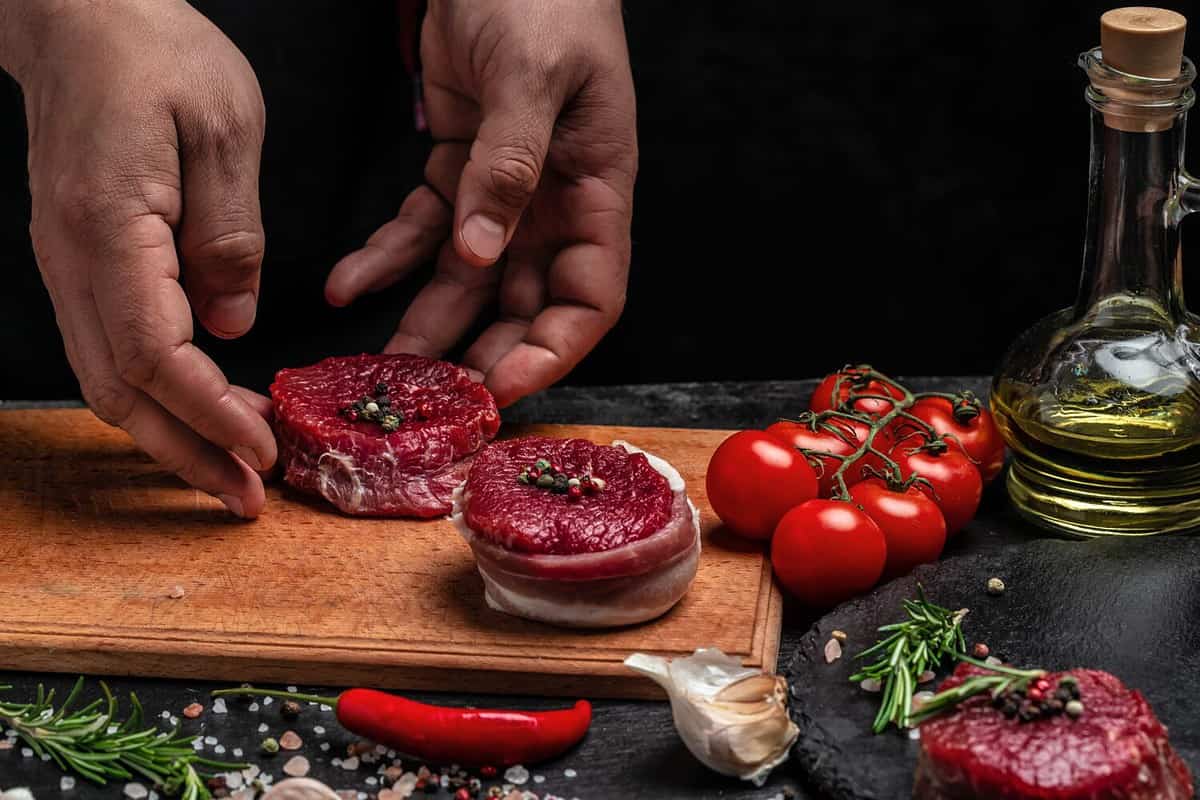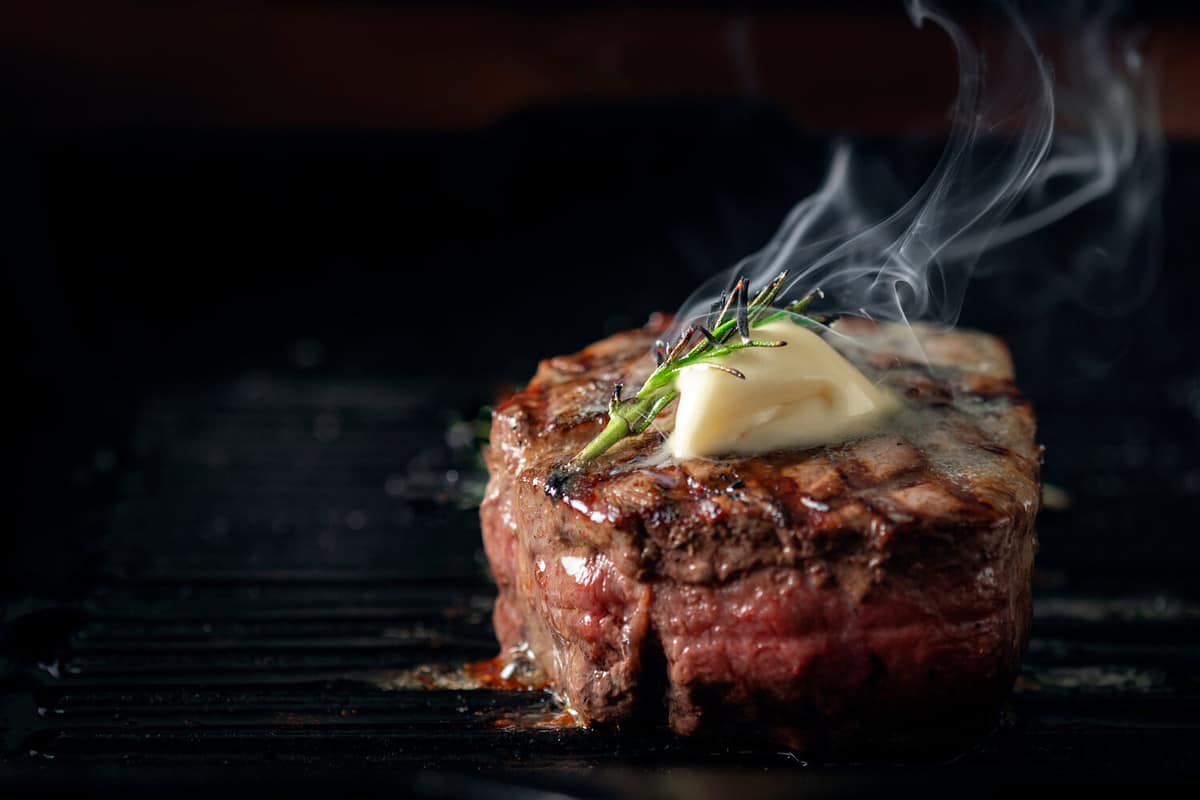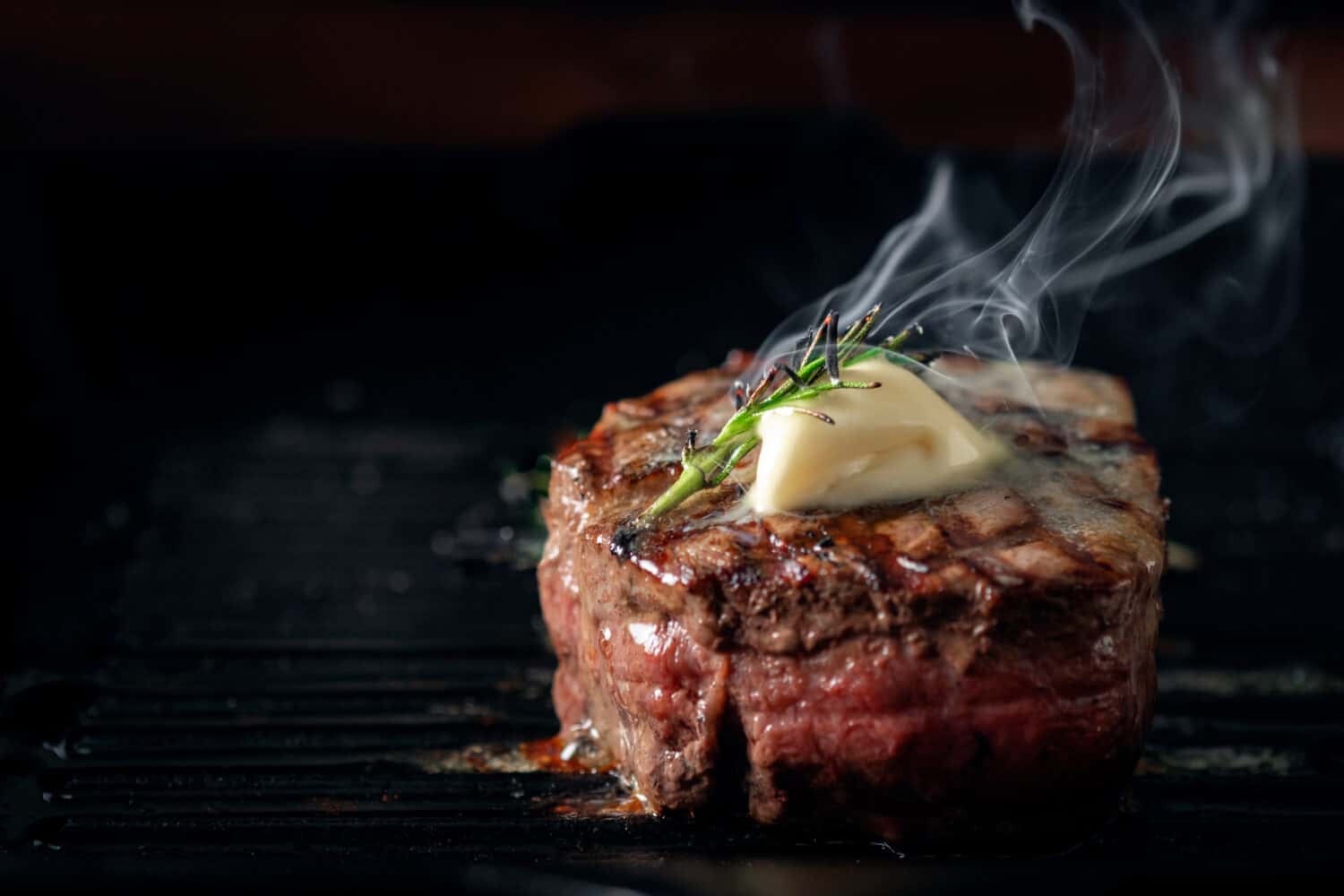From a classic ribeye or filet mignon to a traditional Italian Bistecca alla Fiorentina or a cut of illustrious Japanese Wagyu, steak is a beloved worldwide staple. As recent studies so readily offer up, meat has been a cornerstone of the human diet since ancient times. Whether your preferences lend themselves to a well-seasoned, well-done piece of meat or a medium-rare masterpiece grilled to perfection, there are endless ways to prepare steak … and therein lies the nutritional argument. So is steak healthy? As with anything else, topping steak with butter or bleu cheese adds fat and calorie content. But on its own, steak is a protein-rich source of iron, zinc, B12, and various other essential nutrients. We're digging into scientific studies to find out the advantages and disadvantages of steak.

©Chatham172/Shutterstock.com
What is Steak, and Where Does it Come From?
While the term “steak” can refer to meat cut from a number of different animals, such as bison, goat, pigs, turkey, and even some types of fish, the majority of the steak we see and eat comes from cattle. The most tender cuts of steak — such as tenderloin, sirloin, and ribeye — are cut from the rib or loin of the cow (either male or female), which are areas that offer maximum tenderness due to the fact that those muscles don’t get much exercise.
Some breeds, in particular, are bred for their beef, including Angus and Hereford, but one of the highest grades of beef is Wagyu beef from the Kobe region of Japan. A cut that delivers plenty of fat marbling, it’s a rich cut of meat that has become increasingly popular in recent years. You can find it at most American steakhouses, where it is typically the most expensive item on the menu.

©sweet marshmallow/Shutterstock.com
What are the Health Advantages and Disadvantages of Steak?
Though chicken may be a better source of protein, steak undoubtedly has its merits.
Eating a significant amount of red meat (in general — not just steak) can increase your risk of certain cancers. It can also be high in sodium and saturated fats. In moderation, however, red meat offers important nutrients such as iron, zinc, and vitamins B6 and B12. Here are a few of steak's essential nutrients and their effect on your health:
- Iron: High in iron, steak can help balance a deficiency like anemia and deliver oxygen to your cells. In fact, your body easily absorbs the iron in red meat, and you can get 15% of your recommended daily iron intake from one serving of beef!
- Protein: One of the best sources of protein, steak can assist in keeping our blood, bones, skin, cartilage, hair, and nails healthy. It can also aid in hormone production, increasing muscle mass, and repairing tissue.
- Zinc: Steak is chock full of essential nutrients like zinc, which is crucial in sustaining a healthy immune system, building muscle, promoting brain health and wound healing, and helping digestion.
- Folates: Naturally present in various fruits, vegetables, nuts, dairy products, poultry, meat, and grains, folic acid is the natural form of vitamin B9, which helps make DNA and other genetic material.
- Vitamins: Beef is high in vitamins such as B6 (which regulates hormones) and B12 (which helps DNA synthesis and nerve function).
Despite containing a ton of vitamins and essential nutrients, an overabundance of steak can be counterproductive. Of course, this partly depends on how you choose to serve it. If, for example, you slather your filet in bleu cheese sauce or sautée it in butter, you're adding extraneous fats into the mix.
Additionally, your side dishes carry some major weight when it comes to caloric intake — and let's be honest, steak is most often accompanied by fabulous sides such as mashed potatoes, French fries, or macaroni and cheese!
Nevertheless, even if you eat steak on its own, research suggests that eating red meat or processed meat frequently can heighten your risk of type 2 diabetes, coronary heart disease, stroke, and cancer — particularly colorectal cancer.

©Andrei Iakhniuk/Shutterstock.com
Important Takeaways:
- Steak can come from a number of different animals, but it typically comes from the rib or looin of cattle.
- Steak is a protein-rich source of iron, zinc, B12, and various other essential nutrients.
- Frequently eating red or processed meat can heighten your risk of issues such as type 2 diabetes, coronary heart disease, stroke, and cancer.
- Your steak toppings and accompaniments largely play into the nutritional value of your steak.
Up Next:
- What to Serve with Filet Mignon: The 9 Best Side Dishes with Recipes
- Kobe vs. Wagyu Beef: Taste, Price, & Cooking Differences
- Where on the Cow Does a Filet Mignon Come From?
The image featured at the top of this post is ©Andrei Iakhniuk/Shutterstock.com.
